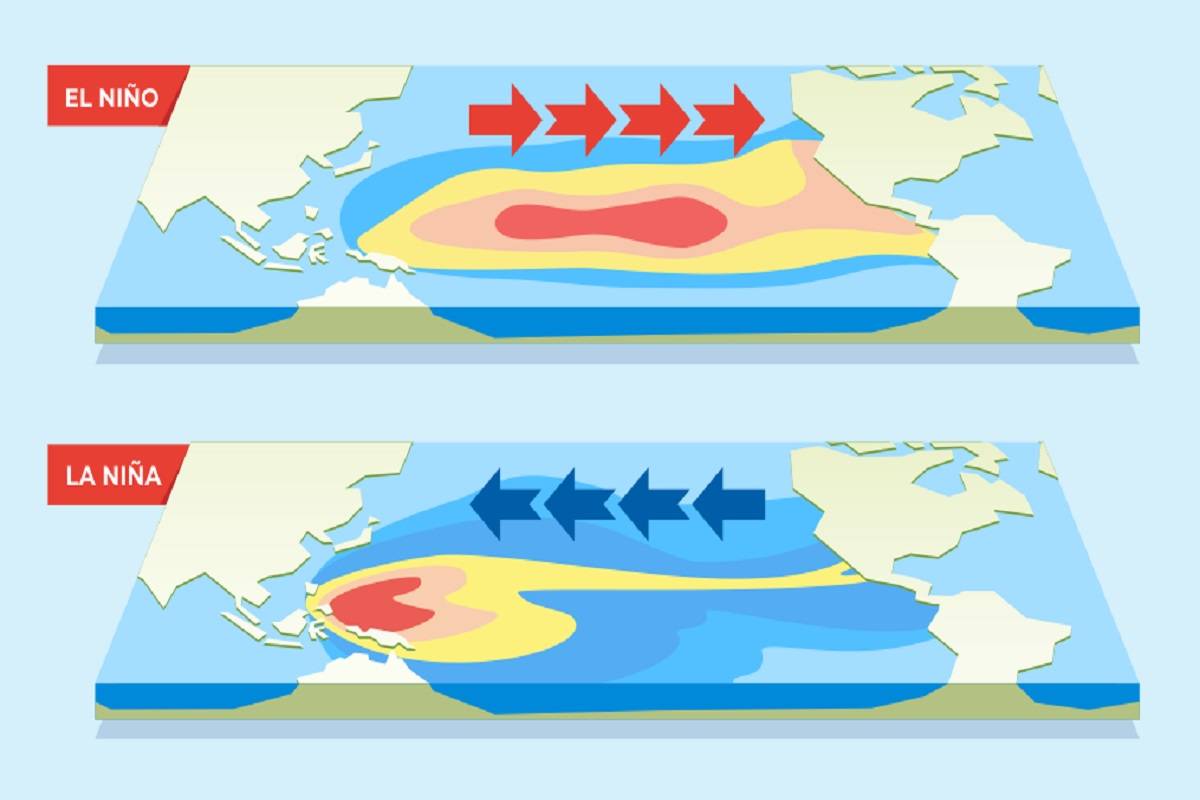
These recurring weather phenomena occur as a result of varying ocean temperatures in one part of the world, specifically the East-Central Equatorial Pacific Ocean. This phenomenon may lead to intense weather conditions like excessive rains, severe drought conditions, etc. in different parts of the world.
How do El Nino and La Nina influence the weather?
The upper layer of the ocean warms and cools sporadically as it interacts with the robustness of the trade winds blowing from east to west in normal conditions. In response to atmospheric conditions, as the ocean surface temperature changes in response to atmospheric conditions, it alters rainfall patterns. El Nino replicates a bit like a scientific dance between the ocean and the atmosphere at the end of the spectrum which is also the warm phase and La Nina is referred to as the cold phase. Jointly these intense phases are called the El Nino-Southern Oscillation (ENSO) cycle.
What Happens During El Nino?
An El Nino occurs when warm water forms along the central and eastern tropical Pacific Ocean. The increase in moisture rising in the air results in more rainstorms. Winter temperature tends to be warmer than normal in the US in the Northwest with a decrease in rainfall while the Southeast experiences wetter and average weather conditions.
What Happens During La Nina?
Reciprocally, when cool water forms along the same region, La Nina arises with opposing consequences. Winter temperatures in the US in the Northwest tend to be cooler than average and warmer than average in the Southeast.
Monitoring El Nino and La Nina:
- Scientific Buoys
Using a number of technologies such as the Scientific Buoys, government, scientists, and non-governmental organizations (NGOs) acquire data about El Nino.
A scientific buoy is an object generally bright in color which floats in water and is employed in the middle of the seas as a locator or as a warning point for ships. These are used to measure air and ocean temperatures, winds, humidity, and currents. They transmit data daily to forecasters and researchers across the globe enabling them to predict El Nino more aptly and observe its development and effect across the globe.
- Oceanic Nino Index (ONI)
Oceanic Nino Index (ONI) is an estimate of the withdrawal from the normal sea surface temperature in the east-central Pacific Ocean which is the level by which El Nino incident is determined, computed, and predicted. ONI is utilized to compute the variations from normal sea surface temperatures. The magnitude of El Nino events varies and is associated with global climatic changes.
















